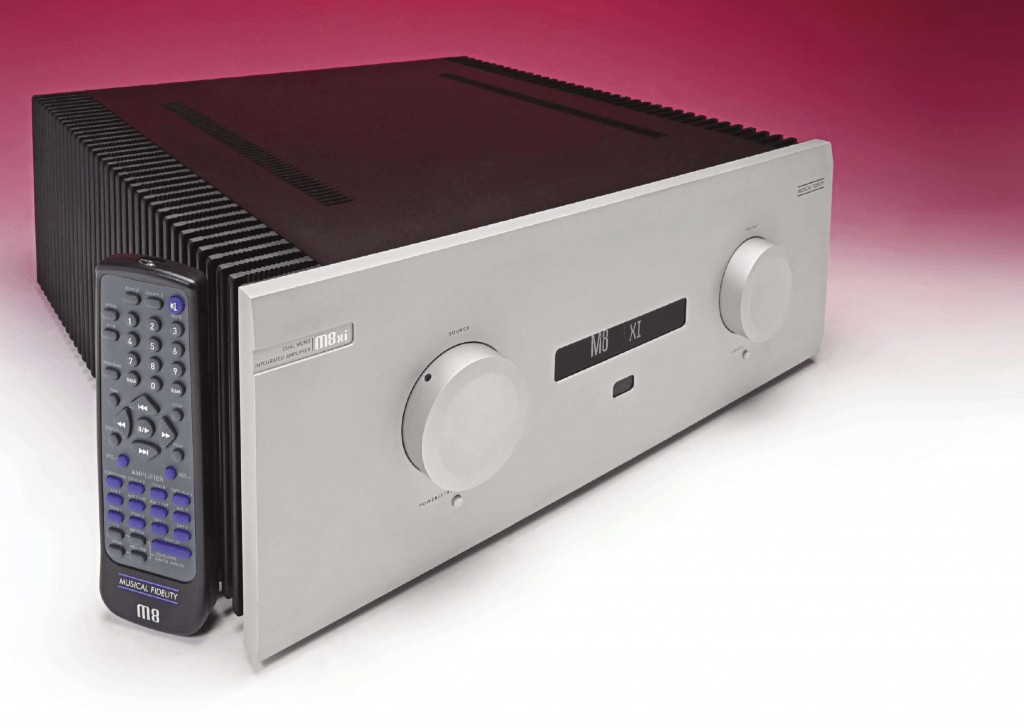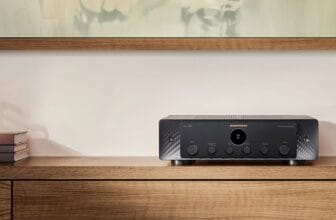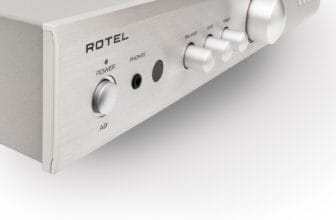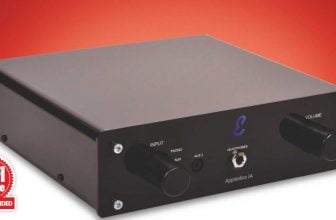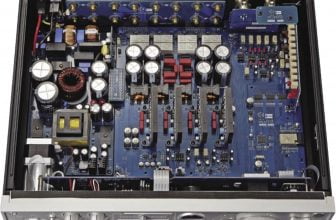MUSICAL FIDELITY M8xi Review: Power House
Massively powerful, the new M8xi amplifier from Musical Fidelity impresses Noel Keywood. Read our MUSICAL FIDELITY M8xi Review.
Long ago I heaved and strained to review Musical Fidelity amplifiers of huge proportion, like the A470 we used at Hi-Fi World in the 1990s as a reference, able to drive any loudspeaker – smoothly. Here’s their latest update, the M8xi able to deliver – gulp – up to 900 Watts per channel.
Unlike the A470, the recent M8xi is an integrated amplifier with pre-amp and digital section too. But like the A470 it is big – a three person lift in our office: weight 46kg (1011lbs). Measuring 17.4in (440mm) wide it will fit a standard 19in hi-fi rack for those able to lift it in place. A depth of 400mm (15.75in) and height of 162mm (6.5in) make it rack fitable too. Dimensions have been set to make it domestically acceptable and it can be used as a normal amplifier since there’s front panel volume control and input selection, but I suspect its remote control will see most use since this is a big amplifier to place high up, to put front panel controls in easy reach.
The M8xi has two bridged amplifiers per channel, each with its own linear power supply in a dual-mono arrangement, meaning two large toroidal mains transformers, partly explaining weight. A single toroidal transformer able to supply such power to the output stage would be a massive wind, making two separate transformers an easier way to go. And dual-mono gives very stable imaging I have found in the past; what happens in one channel does not affect the other – the sound stage stays rock steady even at high volume.

Bridge configuration has advantages for high power output but it means both loudspeaker output terminals are ‘hot’; the negative terminal cannot be connected to earth, as Musical Fidelity warn in their manual. With most loudspeakers, no problem, but there are some that will not suit, including powered sub-woofers and some electrostatics they say. Happily, that does not include our Martin Logan ESL-X reference electrostatics.
I’ll start off with what is not here. There is no Bluetooth wireless link, no Phono stage for a turntable, no ethernet link for an app. There is, however, a USB B computer link to allow music streaming from a computer; up to 24/192 PCM; DSD via DoP is not possible because the Texas Instruments PCM5242 (2014) on-board DAC cannot process DSD, unlike the ESS ES9018 (2013) and later designs. Bit of a negative because DSD playback is becoming common, from a computer equipped with the Audirvana player for example. Best to see the M8xi as a very high power all-analogue amplifier with good quality digital as an adjunct that will suit most people, if not the digital cognoscenti.
There are electrical and optical (S/PDIF) inputs, but optical works to 96kHz sample rate maximum. There is no AES/EBU balanced digital input, nor any digital filter options.
Instead, Musical Fidelity provide two pairs of XLR balanced analogue audio inputs and even one pair of balanced XLR preamp outputs, after the volume control. There are four RCA phono socket line level inputs to accept conventional analogue sources such as an external phono stage, tuner etc. A ‘home theatre’ (HT) option is also provided, with suitable warning about blowing the ‘speakers up (!), and a line output suitable for recording.
Two pairs of loudspeaker outputs allow for bi-wiring, not to run separate pairs of loudspeakers (so no loudspeaker switching). No output power display either to warn of high output, which would be useful considering the enormous amount available, but in real life I suspect this will be fairly obvious to anyone’s ears.
In Musical Fidelity fashion, the M8xi is very strongly built and superbly finished. The large (electronic) volume control moves smoothly, offering 0.5dB steps on a scale from zero to 100, shown clearly on the blue front panel display. There’s comprehensive switch on and protection circuitry that makes turn on quiet and click free. Definitely a smooth user experience once in place;
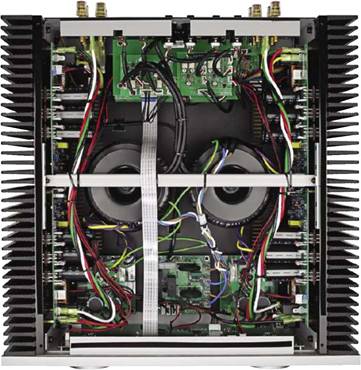
Large finned heatsinks at either side, with associated power transistors and drive boards. Two toroidal mains transformers at center.
I had no problems here.
The IEC C19 mains input socket and supplied lead have a high 16A current rating; specialist mains cables will need to be suitably terminated. Maximum consumption is quoted as 2000W easily within the 3000W ability of a 13A socket. It all sounds a bit daunting but amplifiers even of this output power draw relatively little mains power overall. Like running a few 100W light bulbs (old variety!).
There were times when the heatsink of the channel under test became quite hot, even though test tones were applied briefly: quite how to explain this I do not know. I suspect it has a Class A sliding bias scheme, Class A giving best sound quality but known for inefficiency and heat production because both output transistors of a push-pull pair remain switched on.
The remote control lacks a power on/off function and is lacklustre in design but worked well enough I found. It has input selection, volume and mute.
SOUND QUALITY
I coupled the M8xi to our Martin Logan ESL-X hybrid electrostatic loudspeakers, through Chord Company Signature Reference cables. It was fed from an Oppo BDP-205D Universal (CD) player, via Chord Company Epic balanced cables to analogue XLR inputs, and by a QED Quartz glass optical cable to a digital input. This allowed me to use the external DAC (ESS ES9018) within the Oppo player, as well as the amplifier’s internal DAC (Texas Instruments PCM5242), switching between them conveniently on the remote control (Ball / Optl), to eke out sound quality difference.
Running a series of high dynamic range (uncompressed) CD review tracks It was soon clear that the Musical Fidelity has what I’d call a “crisp sound”. Not soft, warm or especially organic – far from the A470 we once used that was easy going but had the sonic threat of a 40 ton truck. By way of contrast the M8xi caught my attention mostly with its speed and control (aka pace and timing), great insight and sense of restrained power that came from forceful dynamics. With Jocelyn B. Smith singing When I Need You it was fast, delivering vivid drum strikes and the echo from them. Ms Smith’s vocals were sparklingly fresh and clean centre stage: it was all eye popping and there was an underlying sense of power – even though I play loud enough to attract complaints from the office building, yet use no more than 40 Watts on peaks (Measurement shows).
The “crisp sound” was apparent through both the analogue balanced input and the digital input. However; with Nigel Kennedy playing Vivaldi’s Spring his Stradivarius was sheeny and forceful through the (Optl) digital input via the Texas Instruments internal convertor and a tad more fleshed out and easier going through the (Ball) balanced analogue input. Meaning the internal Texas DAC has a brighter presentation than the ES9018 DAC in our Oppo CD player. Which isn’t surprising considering the ES9018 is known for its easy-going nature.
Initially I found the M8xi’s internal DAC more vivid and viscerally engaging, but after a while moved back to the ES9018 for its more convincingly organic nature. Differences were quite subtle, but there all the same. The M8xi’s digital circuits complement the analogue stages in that they share sonic character, reinforcing the amplifiers sense of pace and timing. The internal DAC is closely coupled to the powerful and starkly clean sound of the analogue amplifier – no intervening analogue XLR cables. There was a sense of slightly better coherence as a result.
Which to choose? Very difficult to say. And a personal choice. For sheer pace, rhythm and timing – or PRAT as it was once called – this amplifier’s digital section is monumentally good.
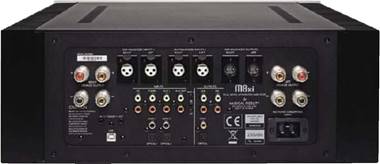
XLR analogue inputs and output at top. Digital inputs at bottom left and a large IEC C19 mains socket at bottom right.
And bass quality? Enormously tight and controlled, yet with powerful punch when delivering Mick Fleetwood’s drum kit from Dreams (Rumours, 24/96) for example, especially from the digital input via the internal DAC. There was never any doubt about massive low end resolution and dynamic sound stage stability: as I turned volume up to deafening level the M8xi maintained rock steady composure, kick drum seemingly chiselled in stone. Cymbal crashes were strong, finely detailed and obvious.
Even Renee Fleming singing Puccini’s O Mio Babbino Caro revealed the amplifier’s stark clarity placing her in clear space free from noise or muddle. Utter poise and a sense that the recording had been freed from murk.
CONCLUSION
Musical Fidelity’s M8xi is obviously powerful; it sounds it even when held in check on the volume control. Dynamically vivid yet pristine clean, it states its purpose dearly. With an internal digital section of good quality and a wide range of inputs this is an amplifier of great ability. Lack of DSD and Bluetooth may be seen as a limitation by some, as might the optical digital input’s 96kHz sample rate limit, but such niggles apart it is an amplifier that performs superbly.
MEASURED PERFORMANCE
The Musical Fidelity M8xi produced a massive 70V swing into 8 Ohms, amounting to 600 Watts. This figure increased to 900 Watts into a 4 Ohm load. It would take a very big loudspeaker to handle this and there’s no output power display to show how much power is being used, as a warning. It needs just 1V from XLR or 0.47mV from phono socket for full (70V) output.
Distortion levels were low across the audio band, just 0.02% at 1kHz and 0.05% at 10kHz at 1 Watt and less at full output (-1dB), so the M8xi is very linear, with no sign of crossover distortion.
Low end response rolls-off relatively early compared to most big power amplifiers, measuring -1dB at 12Hz and -8dB at 4Hz – possibly a safety measure to lessen the possibility of destructive subsonics.
The digital S/PDIF coax input (electrical) worked to 192kHz but optical input 96kHz max. with various optical cables including a QED Quartz glass optical cable; it is specified as 96kHz. Frequency response was flat to 36kHz (-1dB), roiling off to the upper theoretical limit of 96kHz. Distortion at -60dB with 24bit measured a low 0.06% from all outputs, loudspeaker, Line, Preamp and balanced XLR output – a good result from an amplifier where noise from the amplifier circuits gives a worse result than that from a stand-alone DAC.
Dynamic range (EIAJ) measured 112dB from both the loudspeaker and XLR line outputs – and since loudspeaker outputs often degrade dynamic range by noise from the output transistors, this is a good real-life result. The Texas Instruments PCM5242 DAC is rated at 114dB Dynamic Range, a modest figure by today’s standards where 120dB+ is expected.
The M8xi measured well all round, but its digital section lacks DSD and has modest dynamic range. Power output is vast however, in Musical Fidelity fashion.
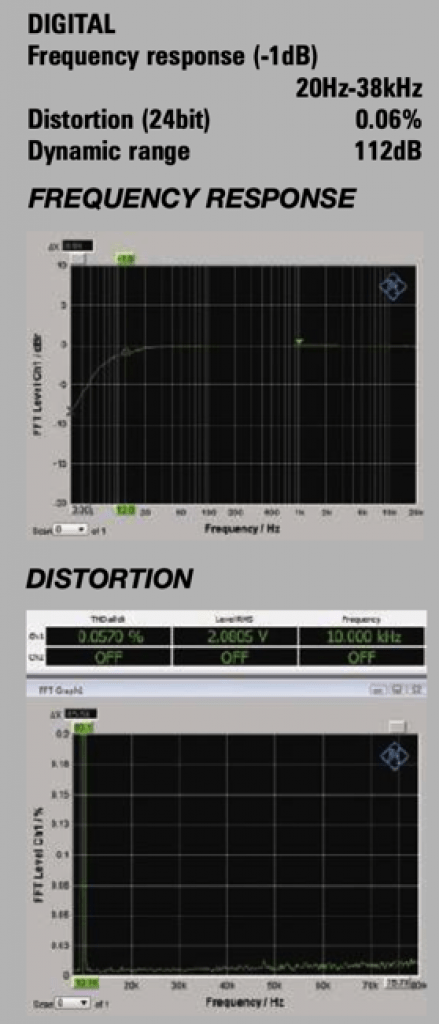
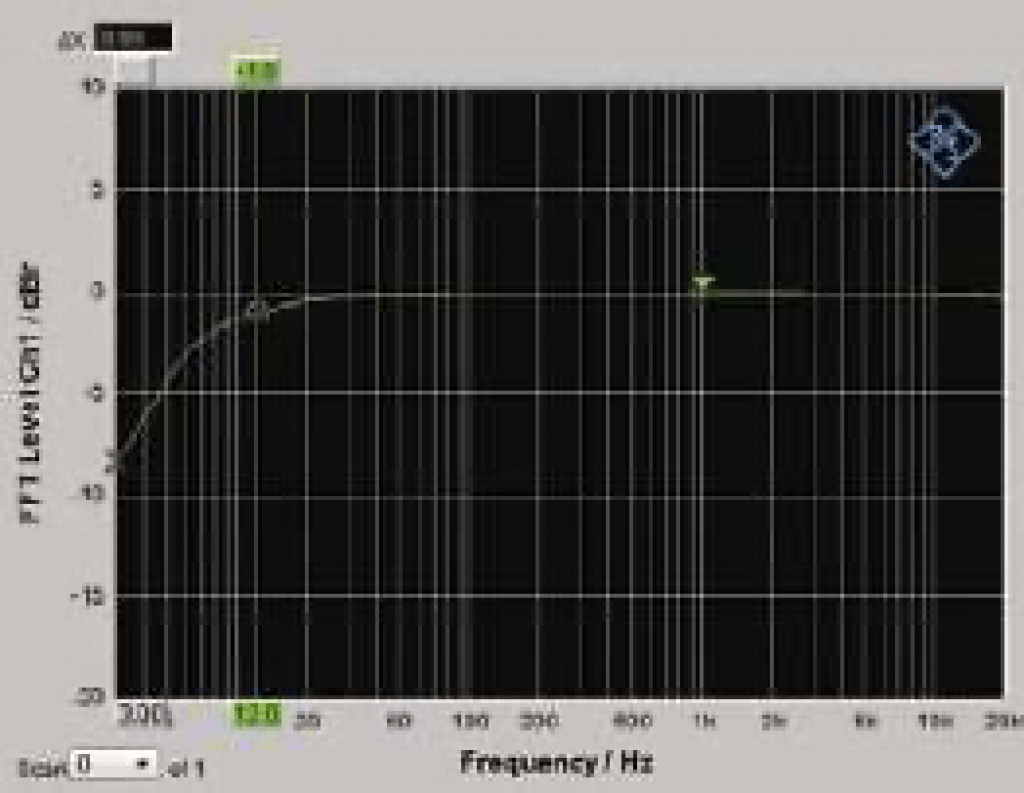
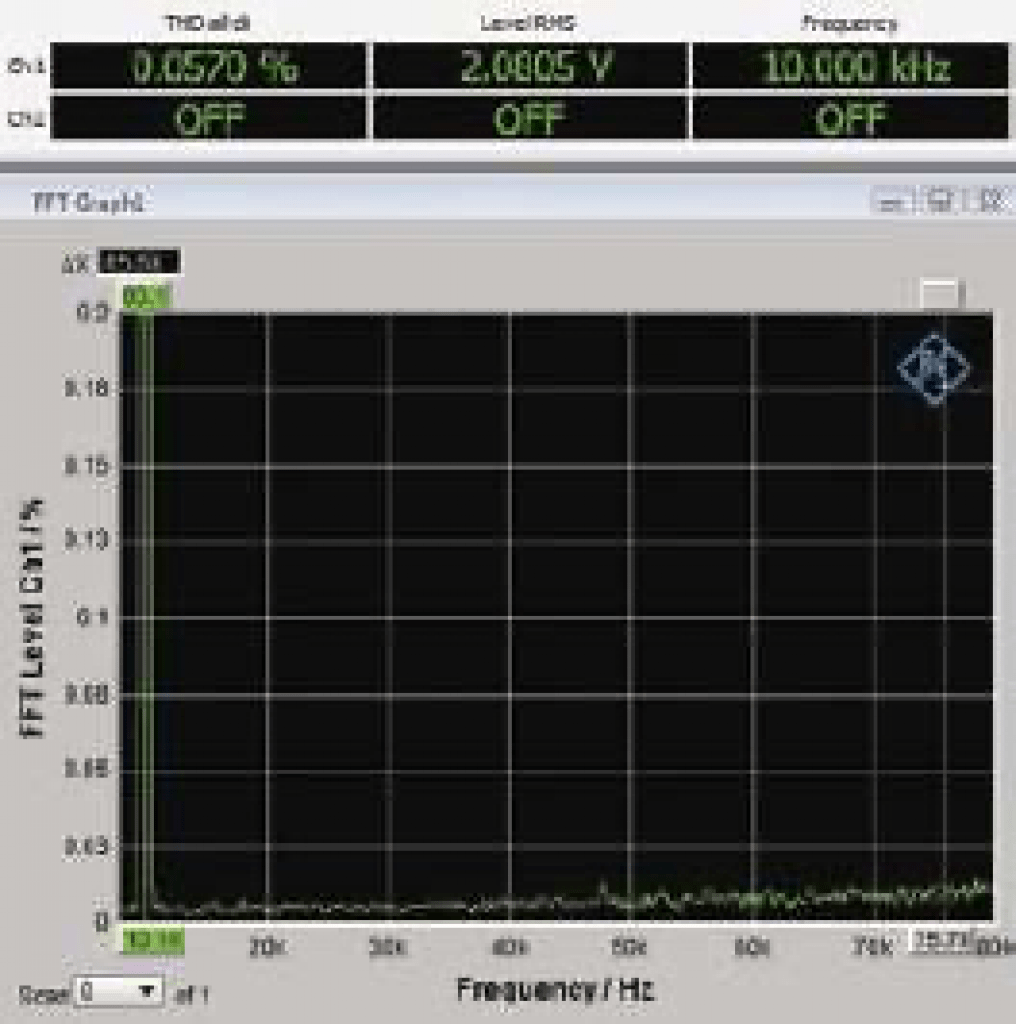
OUTSTANDING – amongst the best.
VERDICT
When you purchase through links on our site, I may earn an affiliate commission. Here’s how it works.
